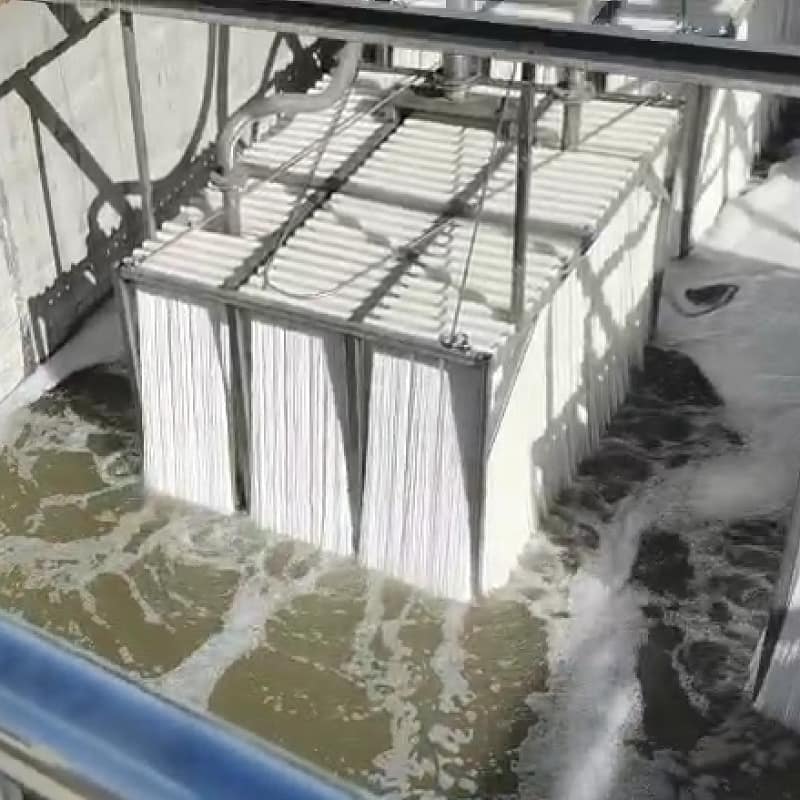Membrane fouling in Membrane Bioreactor (MBR) systems is a significant challenge that can lead to elevated suction pressures, reduced water production, and increased operational costs. Understanding the causes of fouling and the solutions to address it is essential to ensure the long-term efficiency and performance of the MBR system.
Main Causes of MBR Membrane Fouling
- Biological System Imbalances
A primary cause of fouling is poor performance in the biological treatment process. If the system cannot efficiently remove excess sludge or if the aeration is insufficient, organic matter and particulate solids can accumulate, clogging the membrane. This results in increased fouling rates and reduced filtration capacity.
- High Temperatures and Sludge Accumulation
During hot weather, there is an increased likelihood of sludge fermentation and the formation of high-viscosity foam. These foam bubbles can accumulate on the surface of the membrane, reducing permeability. The aeration system may inadvertently introduce these bubbles into the membrane tank, further exacerbating the problem.
- Inaccurate Liquid Level Measurements
Many MBR systems lack a liquid level sensor or rely on faulty readings, leading to a situation where the actual liquid level is lower than expected. This can cause the suction pump to draw foam and sludgy particles into the system, which results in the rapid buildup of fouling and a sharp rise in negative pressure.
Effective Solutions for MBR Membrane Fouling
- Enhance Sludge Removal
A key strategy in managing fouling is to optimize the sludge removal process. Consider running the existing dewatering equipment continuously (24/7), ensuring that excess sludge is effectively removed. If necessary, contact the equipment manufacturer to inspect and repair any faulty dewatering machines to maintain efficient operation. - Defoam the Biological Tank
Adding a defoaming agent to the biological treatment tank can help break down high-viscosity bubbles, reducing foam buildup. This practice can improve membrane permeability by preventing foam and scum from adhering to the membrane surface. - Boost Biological Treatment Efficiency
Improving the biological capacity of the system can help prevent the formation of sludge that leads to fouling. Regularly adding organic nutrients or adjusting the influent to promote the growth of healthy, active biomass can enhance biodegradability, reducing the amount of residual solids that contribute to membrane fouling. - Regular Membrane Cleaning and Maintenance
Periodic cleaning of membrane modules is crucial. You should consider rotating membrane cleaning schedules, particularly for heavily fouled modules. Grouping the cleaning process helps to ensure that fouling is effectively managed and that the system operates at optimal efficiency.
Conclusion
MBR membrane fouling is a common challenge in wastewater treatment, but with a comprehensive approach, it can be effectively controlled. By improving sludge removal, using defoaming agents, enhancing biological treatment, and implementing regular cleaning procedures, you can significantly reduce fouling rates and maintain high system performance.

